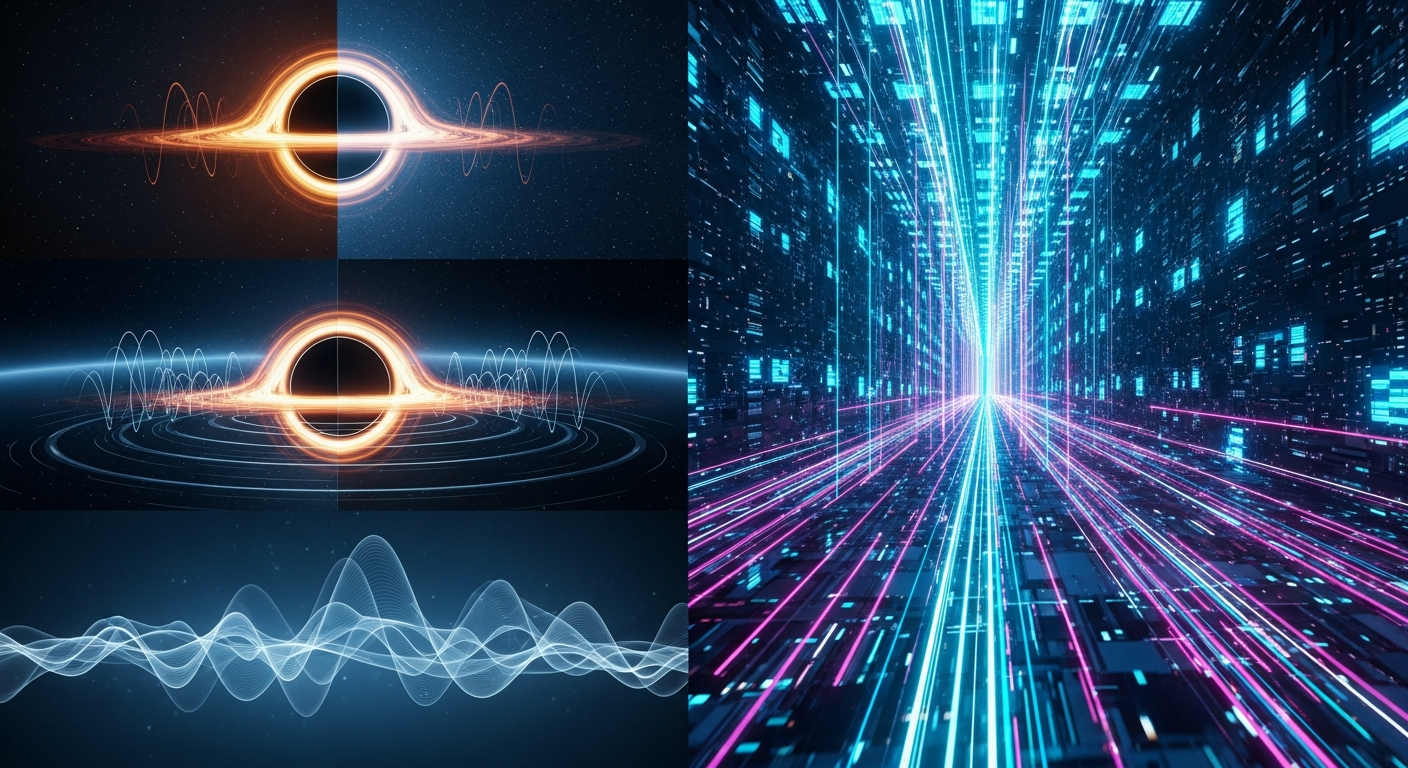Parallel Nested Slice Sampling for Gravitational Wave Parameter Estimation

In a new publication, our group introduces a significant leap forward in analyzing gravitational wave data by parallelizing nested sampling on modern hardware (2509.24949). The detection of gravitational waves has opened a new window into the universe, but extracting physical parameters from these faint signals is a major computational challenge. This work, led by David Yallup and co-authored by Metha Prathaban, James Alvey, and Will Handley, tackles this bottleneck head-on by redesigning a cornerstone of Bayesian inference for the GPU era.
The Challenge: A Computational Bottleneck
Nested sampling is a powerful and robust algorithm for Bayesian parameter estimation and model comparison, and it has become a standard tool in astrophysics. It is a core component of widely used software packages like bilby (1811.02042). However, traditional implementations are often serial in nature, failing to exploit the massive parallelism offered by modern Graphics Processing Units (GPUs). As gravitational wave detectors become more sensitive and the volume of data grows, this computational bottleneck poses a serious limitation to scientific discovery.
A Paradigm Shift: Vectorized Nested Sampling on GPUs
Our paper demonstrates a novel approach that reformulates the nested sampling algorithm to be natively vectorized. We implement a “Nested Slice Sampling” (NSS) kernel within the blackjax framework, which allows the entire inference process to run efficiently on a single GPU. The key innovation is executing the sampling step in parallel across the entire population of live points. This unlocks a level of parallelism that is simply unattainable for CPU-based methods; for instance, our implementation can replace 1500 live points in a single iteration, dramatically accelerating the exploration of the parameter space.
Performance on Real Data: The GW150914 Event
To validate our method, we applied it to real data from the first-ever direct detection of gravitational waves, the binary black hole merger GW150914 (1602.03837). We benchmarked our GPU-accelerated NSS pipeline against both a traditional CPU-based bilby analysis and a state-of-the-art GPU-accelerated MCMC sampler, FlowMC (2211.06397).
The results are striking:
- Massive Speedup: Our pipeline completed the analysis in just 207 seconds, achieving a speedup of two orders of magnitude compared to the estimated 10,000 seconds for a standard
bilbyrun. - Superior Efficiency: It converged almost three times faster than the GPU-based
FlowMCsampler while producing a higher Effective Sample Size (ESS), demonstrating superior efficiency per unit of computational time. - Robust Scaling: The performance scales impressively with the number of live points, showcasing the algorithm’s ability to leverage the full power of the GPU.
Implications for the Future
This work establishes that GPU-accelerated nested sampling is not just a legacy baseline but a highly competitive and powerful tool for modern astrophysical inference. By harnessing hardware acceleration through algorithmic reformulation, we provide a robust, accurate, and incredibly fast method for parameter estimation and model selection. This approach, which complements other group efforts in accelerated inference such as 2509.04336, will be crucial for keeping pace with the deluge of data from future gravitational-wave observatories and paves the way for more comprehensive and rapid scientific discoveries.




Content generated by gemini-2.5-pro using this prompt.
Image generated by imagen-4.0-generate-001 using this prompt.